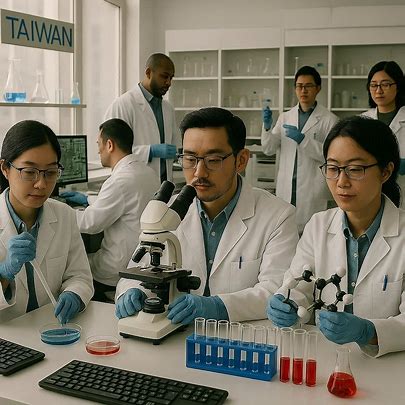
Taiwan Biotech Industry Trend Analysis
共有
Precision Medicine, Digital Innovation, and Global Market Integration
In recent years, Taiwan’s biotech industry has gradually shaped a development framework centered on precision medicine, regenerative medicine, AI-enabled drug development, and metabolic disease therapies. This transformation is driven by strong government policy support, robust R&D capabilities, and increasing international collaboration. These four domains not only align with global pharmaceutical trends but also highlight the strategic directions of Taiwan’s industrial upgrading.
1. ADC: A New Generation of Precision Oncology
Antibody–Drug Conjugates (ADC) have become one of the most promising innovations in global oncology. By combining the targeting power of monoclonal antibodies with the potency of cytotoxic payloads, ADCs can selectively attack tumor cells while minimizing damage to healthy tissues.
The technical core of ADC lies in the integration of antibodies, payload molecules, and linker design. Taiwan has a clear competitive edge in antibody engineering, small-molecule synthesis, and linker technology. With the support of academic institutions such as 中央研究院 (Academia Sinica), local companies are increasingly positioned to enter critical nodes of the ADC value chain. Several firms have already adopted international platform technologies, developed proprietary antibody libraries, and expanded manufacturing capacity to align with global oncology trends.
2. Cell & Gene Therapy: Regulatory Momentum Meets Technological Innovation
Cell and gene therapy marks a major leap in medical technology—from “repair” to “reconstruction.” Taiwan’s regulatory foundation has been strengthened through the Regenerative Medicine Act, which provides a clear legal framework for clinical applications and accelerates product development.
CAR-T therapy is currently the most mature technology, demonstrating remarkable efficacy in hematologic malignancies. Meanwhile, NK cell and MSC stem cell applications are expanding rapidly. Hospitals and CDMO players are investing in GMP-compliant cell processing centers (CPC), forming a “R&D–Clinical–Manufacturing” value chain. The synergy between regulatory clarity and technological advancement is enabling Taiwan to integrate more deeply into the global regenerative medicine ecosystem.
3. AI/ML-Enabled Drug Development: A Competitive Digital Lever
Artificial intelligence and machine learning (AI/ML) are transforming the way drugs are discovered and developed. By leveraging big data analytics and algorithmic modeling, AI/ML shortens development timelines and reduces failure rates, making it an increasingly critical competitive tool.
Taiwan’s global leadership in semiconductors and ICT provides a solid foundation for AI drug development. Currently, applications are concentrated in early drug discovery and lead optimization, while some companies have begun exploring new formulations and indications. As adoption expands into clinical trial design and real-world evidence analysis, the value of AI/ML in drug development will continue to grow.
4. GLP-1 Drugs: A Blue Ocean in Metabolic Disease Treatment
GLP-1 receptor agonists, initially developed for diabetes management, have become a global blockbuster class due to their significant weight-loss benefits. This surge in clinical evidence and market demand has made the GLP-1 space a key battlefield for pharmaceutical companies worldwide.
Taiwanese firms are approaching this market from three angles:
-
New molecule development to enhance tolerability, minimize side effects, and improve formulations (e.g., oral administration).
-
Multi-receptor agonists that combine GIP/Glucagon mechanisms to boost metabolic control.
-
Generics and biosimilars targeting post-patent opportunities.
Through global clinical collaborations and licensing strategies, Taiwan aims to position itself as a regional innovation and supply hub. However, since this market is dominated by major multinational pharma, differentiation will be crucial to compete effectively.
5. Conclusion: From Technology Followers to Value Chain Co-Creators
Taiwan’s biotech industry is undergoing structural transformation—moving from traditional small-molecule R&D toward precision medicine, cell therapy, and digital innovation, while actively entering the fast-growing metabolic disease market. This shift not only demonstrates technological advancement but also reflects a more strategic, globally integrated industry mindset.
The next stage of competitiveness will rely not only on scientific breakthroughs but also on the ability to integrate R&D, clinical development, market strategies, and capital. If Taiwan can secure high-value segments within the innovation chain and enhance global regulatory and industrial collaboration, it can play a more strategic role in the international biotech landscape.

